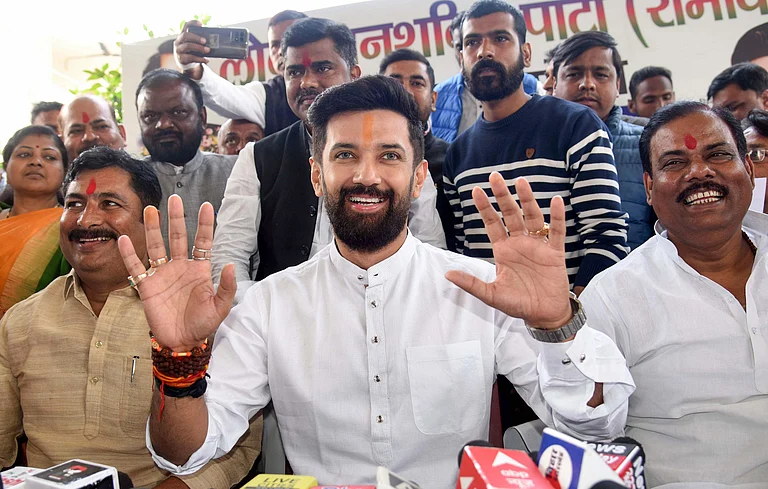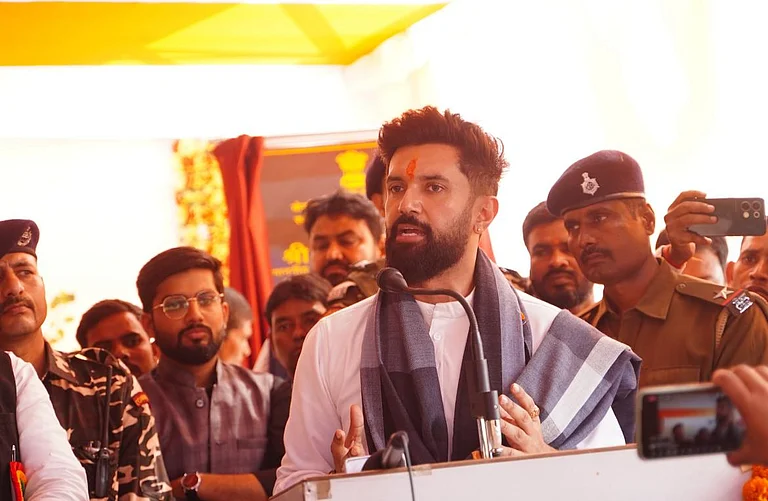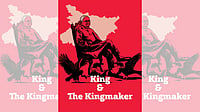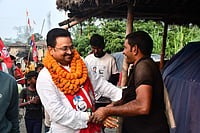
In 2010, the NDA swept 37 of 38 reserved Assembly seats, but by 2020, the contest had tightened — NDA won 21 seats, and the Opposition bloc secured 17 — reflecting an erosion of caste-based consolidation.
Within the SC community, Paswan, Ravidas, and Musahar groups dominate the vote base, collectively representing around two-thirds of Bihar’s SC population and influencing ticket distribution across parties.
Ahead of the 2025 elections, JD(U), RJD, and LJP(RV) have fielded more candidates from SC and ST backgrounds than in previous polls, signalling a competitive push for inclusivity and a renewed focus on Dalit empowerment.
In Bihar, caste dynamics continue to shape both welfare schemes and voting patterns. The state, with a population of 13.07 crore, conducted a caste census in 2023, the first since the 2011 national census. The new data has upended previous assumptions about the state’s demographics. The census reveals a notable shift in Bihar’s political landscape. Scheduled Castes (SCs) now account for around 19.65 per cent of the population, or 2.6 crore people, up from 16 per cent in 2011. Scheduled Tribes (STs) remain a small minority at 1.68 per cent, or 22 lakh.
This increase represents an additional five to six million voters, whose political influence has been underestimated for over a decade. Within the SC community, three groups dominate: the Ravidas and Paswan communities each comprise roughly 5 per cent of the state’s population, while Musahars account for about 3 per cent.
Together, these three groups make up nearly 65 per cent of Bihar’s SC population. Breakdown by subgroup includes Chamar/Mochi/Ravidas/Charmkar at 5.25 per cent, Dusadh/Dhari/Darahi at 5.31 per cent, Pasi at 0.98 per cent, and Mehtar at 0.19 per cent. Poverty remains widespread with over 34 per cent of Bihar’s families living on less than ₹200 per day, including nearly 44 per cent of SC households. Bihar has long been scarred by caste violence, reaching a horrific peak in 1977. On May 27 that year, in Belchhi block, Patna district, 11 Dalits were tied up, shot and burnt by upper-caste assailants.
Among the victims was a 14-year-old boy, killed while trying to escape. Eight of the victims were Paswan, three belonged to the Sonar (goldsmith) caste. Homes and belongings were destroyed, and reports suggest the perpetrators held a feast beside the burning pyres as their victims perished. The massacre made national headlines and became a political turning point, paving the way for Indira Gandhi’s return to public life after a six-month self-imposed exile following Congress’s crushing defeat in the 1977 Lok Sabha elections.
Caste Dynamics in Past Elections
A rigid caste system still exists in India and in Bihar, which Union minister and LJP (Ram Vilas) chief Chirag Paswan has called the main reason the state is “lagging behind even after eight decades of independence.”Caste-based political alignments continue to shape Bihar’s electoral landscape, influenced by shifting alliances, socio-economic changes and the rising aspirations of a new generation of voters. Of the 243 seats in the Bihar Legislative Assembly, 38 are reserved for Scheduled Castes. In 2010, the NDA achieved a near sweep, winning 37 of these seats. By 2020, its lead had narrowed to 21-17.In 2015, when the Janata Dal (United) contested as part of the Mahagathbandhan, the alliance won 29 of the 38 reserved seats. By 2020, both the BJP and RJD secured nine seats each, while the JD(U) and the Congress–CPI(ML)–CPI alliance won eight seats apiece.
Candidates breakdown, Bihar Elections 2025:
In the upcoming Bihar Assembly elections, parties are carefully balancing caste representation to maximise their electoral reach. Alongside candidates from dominant castes, they have fielded nominees from a broad social spectrum to counter caste dominance in key regions. Chief Minister Nitish Kumar’s JD(U) has nominated the highest number of candidates from OBC, EBC, and SC communities. Projecting himself as the political voice of non-Yadav OBCs and EBCs, Nitish has allotted 37 tickets to OBCs, 22 to EBCs, 15 to Scheduled Castes and one to a Scheduled Tribe. The Lok Janshakti Party (Ram Vilas), allotted 29 seats under the NDA’s seat-sharing arrangement, has fielded five candidates each from the Rajput and Yadav communities, and four each from the Paswan and Bhumihar groups. Party chief Chirag Paswan has also distributed tickets widely, nominating one candidate each from the Brahmin, Teli, Pasi, Sudhi, Rauniyar, Kanu, Rajwar, Dhobi, Kushwaha, Ravidas, and Muslim communities.
The RJD has given tickets to 51 Yadavs out of 143 seats, while also fielding candidates from upper-caste and EBC backgrounds. Across the Mahagathbandhan alliance, which is contesting 255 seats in total, several constituencies are witnessing “friendly contests” among alliance partners. In all, the RJD has fielded 18 Kurmi-Kushwaha, 51 Yadav, 8 Vaishya, 14 upper-caste, 33 EBC, 19 SC, and 18 Muslim candidates. The Congress, contesting 61 seats, has nominated nearly one-third of its candidates — 21 in total — from upper-caste communities. Its candidate list also includes 5 Yadavs, 6 EBCs, 3 Vaishyas, and 12 SCs, The Times of India reported.
Meanwhile, Prashant Kishor’s Jan Suraaj Party brought its total to 116 out of 243 constituencies. The second list includes 19 candidates from reserved constituencies — 18 SC seats and one ST seat. Notably, the JSP has also fielded an SC candidate from an unreserved constituency: Harnaut, the home seat of Chief Minister Nitish Kumar.



























